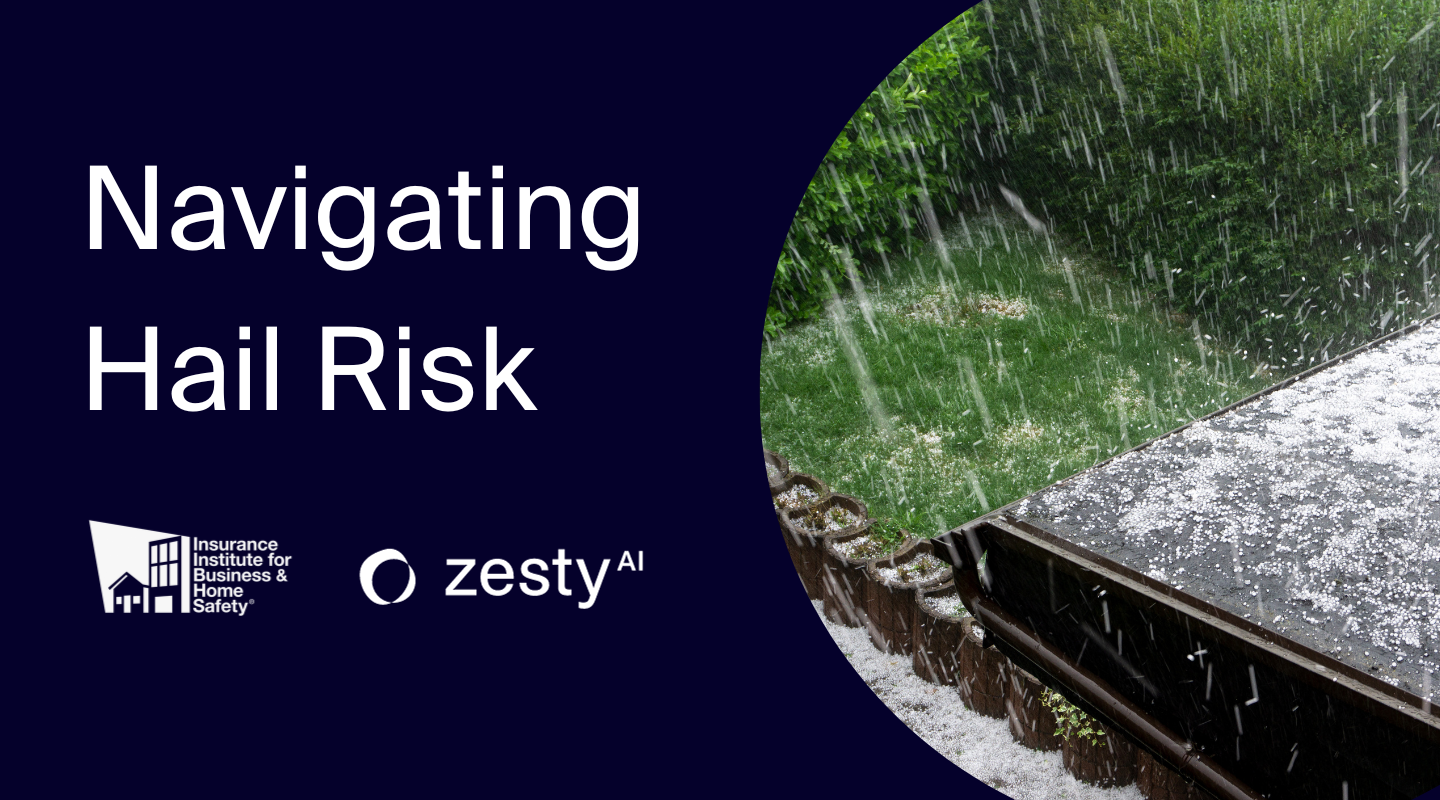How to Navigate Hail Risk With IBHS & ZestyAI
What insurers need to know to predict hail losses more accurately and profitably.


Hailstorms: A Growing Concern
In 2023, the single costliest natural catastrophe for insurers isn't hurricanes, earthquakes, or even wildfires - it’s thunderstorms. Over the past decade, severe weather events, especially hail, have contributed to over $250 billion in insurance losses in the United States alone (Gallager Re).
As this so-called ‘secondary peril’ continues to grow, it is increasingly important that insurance carriers have the tools they need to understand and assess hail risk accurately. That is why the ZestyAI team recently partnered with our longtime friends at the Insurance Institute for Business & Home Safety (IBHS) to host a session on navigating hail risk.
Want to see the full version of Navigating Hail Risk with IBHS & ZestyAI? Watch the video now.
Small Hail, Big Impact
Traditionally, the insurance industry has focused on the risk posed by large hailstones, typically defined as hail above two inches in diameter. However, recent research has shed light on the significant impact that smaller hailstones have on roofs.
Research shows that smaller hailstones (less than one inch in diameter) cause nearly 30% of the granule loss on an asphalt shingle roof compared to larger stones. As granules are lost over multiple events, the roofs degrade, exposing underlying asphalt material to accelerated aging and weathering. With repeated exposure to these smaller hailstorms, the lifespan of a roof is decreased and it becomes more susceptible to future damage. These smaller hail events collectively contribute to significant damage over time, often surpassing the cumulative impact of the much more rare large hail events, which make up less than 0.01% of all stones.
To get a complete view of risk, it is essential for insurers to recognize the significance of these smaller hail events. By doing so, they gain a better understanding of real risk and can mitigate the long-term impacts of hail.
Taking a Predictive Approach
Through research conducted by IBHS and ZestyAI, it has become clear that assessing the accumulated damage of weather events over time is a better predictor of risk than focusing solely on individual storm events that contain extremely large hailstones. To better assess risk, we need to shift our perspective and consider that even small hailstone impacts can significantly reduce the lifespan of a roof and increase its susceptibility to future hail events.
This approach is nearly 58 times better at splitting hail risk compared to using a forensic approach and looking back at large hail events-only. By adopting a more predictive approach, insurance professionals can anticipate hail losses much more accurately and profitably.
Beyond Small Hail: Improving the Modeling Approach
In order to safeguard an existing portfolio against hail and to ensure accurate pricing at the time of writing a policy, it is important for insurers to enhance their risk assessment by adopting a holistic approach that combines hail science, property-specific features and real claims data. Traditional stochastic models don’t automatically account for the relationship between weather and the structure itself, and typically focus on storms reported to have hailstones over one inch. These omissions in both property-specific and climate data result in predictions that have contributed to the rise in insured losses in recent years.
ZestyAI’s Z-HAIL model is rooted in scientific research and a keen understanding of the challenges presented by hail in North America. Z-HAIL is unique in how it intersects decades of historical climatology data with property-specific features for unparalleled accuracy in risk assessment. To do this, ZestyAI taps into the immense computing power of the cloud and leverages the latest techniques of AI and machine learning to precisely model the vulnerability of every property in North America to hail based on their specific characteristics, such as roof complexity, quality, and building materials, among others. In addition, Z-HAIL has been trained and validated on actual loss data for better accuracy and acceptance by regulators, and it provides unparalleled transparency into risk scores by including the top risk factors contributing to each property’s score.
These vast amounts of data are then synthesized into two scores, Claim Frequency and Claim Severity, so insurers have an accurate assessment of the expected claim frequency for each property as well as an accurate understanding of how serious a future claim may be.
By leveraging vast amounts of historical climatology data and property-specific features, ZestyAI's Z-HAIL model provides valuable insights so insurance professionals can make more informed decisions and offer coverage that is commensurate with actual risk.
–
ZestyAI and IBHS share a history of deep collaboration, having worked in tandem since 2020. Our partnership has always centered on Connecting Science from the Lab with Data Science in the Cloud. Recent collaborations include Wildfire Fuel Management and Risk Mitigation, which looked at the impact of mitigation efforts on wildfire losses, and Small Hail, Big Problems, New Approach, which researched the impact of small hail on roof damage and hail claims. In addition, ZestyAI now incorporates IBHS Fortified designations into its Z-PROPERTY product, freely available to any ZestyAI customers who are IBHS members.
Want to see the full version of Navigating Hail Risk with IBHS & ZestyAI?









